13 Types of Drywall Anchors to Hang Any Weight Safely
Author: Rick Worst | Editor: Omar Alonso
Review & Research: Jen Worst & Chris Miller
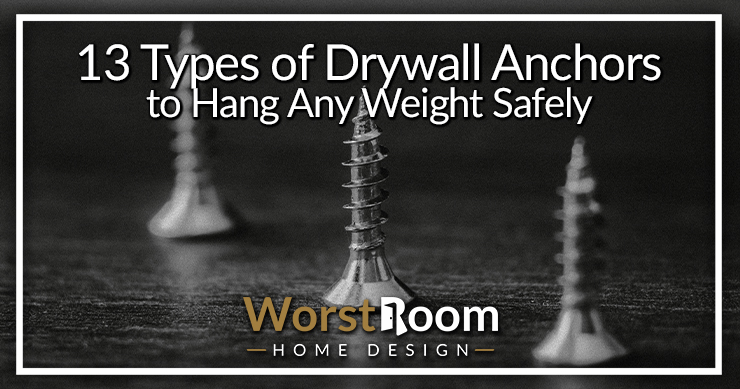
When it comes to hanging heavy decorative artworks on your walls, you want to ensure the strongest hold. There's no other tool as effective as the various types of drywall anchors to get the job done.
Nowadays, drywall is part of every modern construction, and you'll find it difficult to drive nails and screws through these soft walls as they lack wood studs.
Luckily, we have many different types of drywall anchors available on the marketplace that holds these fasteners firmly in their place, allowing you to hang any light or heavy object you want.
However, not all drywall anchors are made the same, and different styles of anchors serve different purposes.
13 Types of Drywall Anchors
To make sure that you can pick up the appropriate anchor, we will discuss all the varieties of drywall anchors depending on their style and material that will work with any types of drywall. Without further ado, let's dive right in.
Types of Drywall Anchors by Style
Mostly, there are four main different varieties of drywall anchor available in stores, along with others we'll mention. The styles vary in their design, weight capacity, uses, and installation process. Here are the most common anchor styles with their unique features and uses.
Expansion Anchors
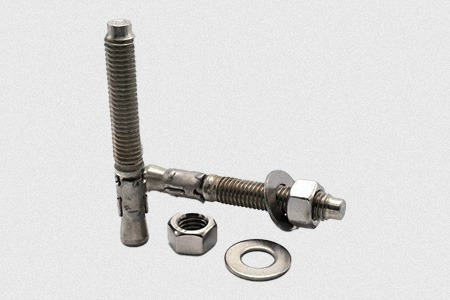
This type of anchor is the most commonly used one and a must-have for every handyman. You can use the expansion anchors to hang any lightweight item like a picture frame or simple types of mirrors.
As these anchors are the go-to option for most people, they are usually made from plastic and steel. The anchor is also known as a hollow wall plug or wedge anchor.
Plastic expansion anchors are extremely cheap and come in packs containing as many as 20 to 100 pieces. The anchors look like ribbed jackets that hold the nails or screws. Depending on the size, expanding anchors can support 15 to 25 pounds of weight.
To install these drywall anchor types, drill a pilot hole smaller than the diameter of the anchor. Then place the tool inside and fasten it with a hammer. Driving the screw inside the anchor will expand to spread the pressure on the wall and ensure a firm grip.
Self-Drilling Anchors
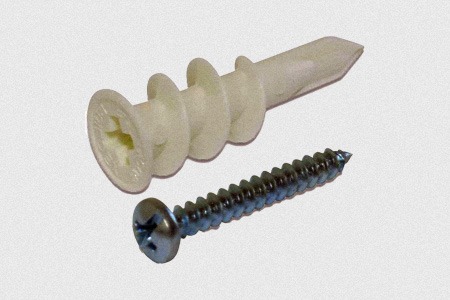
If you want a medium-duty anchor for hanging heavier objects, self-drilling anchors are the way to go. These anchors look more like a screw with their threaded nuts and pointed tips.
You can buy the anchors in plastic, steel, or zinc-coated materials. While plastic ones are cheaper, steel anchors provide durability and a stronger hold.
As the name suggests, the anchor doesn't need any pilot hole, and you can install it merely with a screwdriver.
Place the anchor in place and use a screwdriver or a drill to install the anchor inside the wall. As you insert the screw, the threads will cut deeper into the wall, ensuring a pull-out resistant grip.
Depending on the material and size, self-drilling anchors can hold 30 to 80 pounds of weight, far greater than the weight drywall holds without an anchor. However, you can't use these anchors for hanging any item from the ceiling.
Molly Bolts
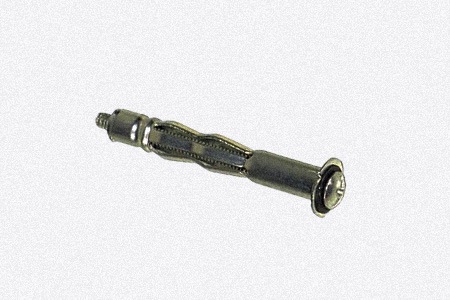
Also known as hollow wall anchors, these types of drywall anchors are some of the strongest options available. Molly bolts are more suitable for hollow drywall, tiles, and other thin materials. They are designed to be permanently set on the wall so that you can use one anchor for several new screws.
Typically, molly bolts are made from steel or zinc to ensure longevity. The anchors appear as funnel-like metal casings with a round shank at one end.
For installing the anchor, you need a pre-drilled hole. As you insert the anchor in the wall, the metal case expands to fasten itself inside strongly.
Molly bolts can hold weight from 50 to 75 pounds. You can use them to hang your towel racks, heavy frames, and coat hangers. Also, this type of anchor is suitable for hanging lightweight smoke alarms from the ceiling.
Toggle Bolts
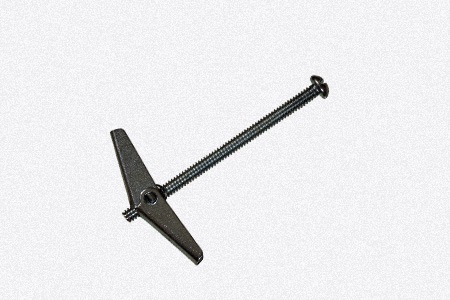
All the previous anchors were limited to light or medium uses. Toggle bolts are a perfect choice if you want a drywall anchor for heavy-duty purposes.
These anchors can accommodate weight from 100 to 300 pounds. Be it concrete, metal, wood or any other drywall alternatives, this type is suitable for all kinds of wall materials.
Use the anchors for mounting your TV stand, heavy shelves, electronic devices, and large portraits.
For meeting various needs, they are available in a bunch of materials, lengths, and designs. The most common toggle bolts are a quarter-inch size. Usually, these types of drywall anchors have two parts: long standard types of bolts and wing-like toggles.
While installing the winged anchor, you have to drill a pilot hole as per the size of the anchor. Then bring the two wings together and insert the anchor into the hole. After installation, the wings will spread automatically, or you have to spin the tool a little to release them.
Finally, use a screwdriver to fasten the anchor snugly in the wall, and it's ready for your art pieces.
Strap Toggle Anchors
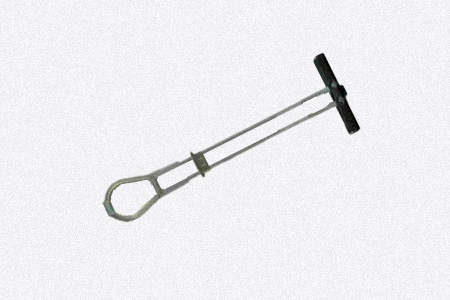
Strap toggle drywall anchors are called such due to their similarity in function to a normal toggle bolt and plastic expansion anchors, though they look nothing alike.
In the way toggle bolt types of drywall anchors will expand behind the drywall to resist being pulled out, a strap toggle anchor does the same with a piece of metal that will be turned sideways after being pushed through the drywall.
Once this strip of metal is turned sideways on the other side of the drywall, your bolt will screw into it from this side of the wall. Once tightened down, the metal can bite into the back of the drywall to create a firm grip.
The way any of this is possible is thanks to the titular strap made out of plastic. It will be attached to the metal strip that gets pushed through the pre-drilled hole. Don't be rough with it because you need it to hold firm until your bolt is screwed into the metal toggle.
At that point the plastic strip can be removed for better appearances and more room to hang your heavy items. If you decide to remove this anchor from the wall, the metal toggle will simply drop into the wall between the studs, drywall, and whatever types of fiberglass insulation you have (rigid or fluffy). No harm, no foul!
Spring Anchors
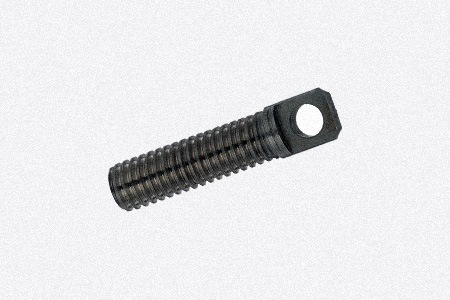
A spring anchor is a contraption that holds within it an expansion spring. This spring connects to two surfaces and supports weight through its own inherent tension. What's nice is that it's adjustable so that you can increase or decrease the amount of spring extension.
You'll install a threaded sleeve into the drywall and from there the spring anchor is installed. You'll find these drywall anchor types in four varieties: single groove, multiple groove, swivel hole, and fixed hole anchors.
Sleeve Anchors
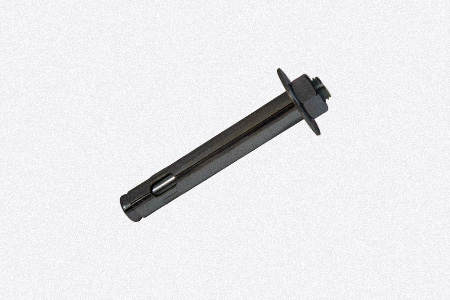
A sleeve anchor can be used with drywall though you may more often see them being used in applications involving masonry, types of house foundations, and concrete. What happens is you'll drill out the proper sized hole to tap the threaded sleeve into it.
From there, you'll screw your bolt into the sleeve and the inner sleeve will expand and push into the bricks or whatever is acting as the outer sheath. These can handle very heavy loads including steel, wood, concrete, and other types of materials.
Adhesive Anchors
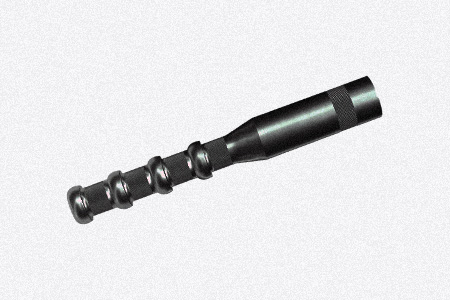
An adhesive anchor are used in home improvement projects, big construction projects, and more due to their ability to handle heavy loads. Their strength can't be understated. They can deal with all kinds of weather, heat, cold, rain, and vibrations.
These epoxy-based types of drywall anchors are popular in construction because they work well with dowels and with rebar. You may not ever reach for them just for drywall tasks, although they can work there. I just want you to know the option is out there.
Cement Board Screw Anchors
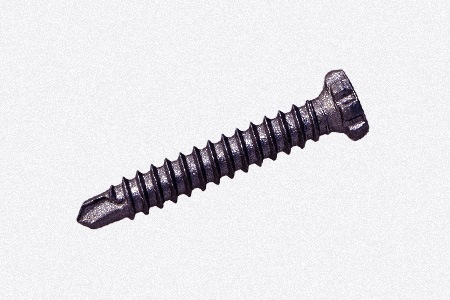
You could argue that cement board anchors are really types of screws and I'd agree, but the industry still calls them anchors. They're used to attach cement board to either steel or to wood. As you know, cement board isn't quite drywall but it's a similar concept.
You'll find it used for bathtub attachments, under flooring, with countertops, and other applications, especially where water might be involved. So make sure the anchors you use are resistant to corrosion and rust.
Alligator Anchors
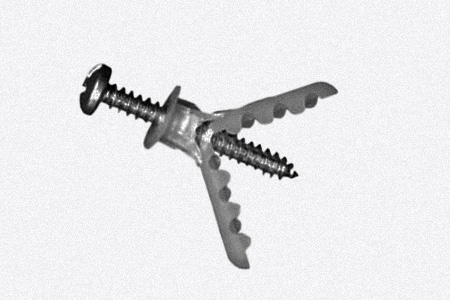
The final of the drywall anchor types are the alligator anchors. They resemble expansion anchors expect they don't expand. They do have a sleeve that will be tapped into a pre-drilled hole in your drywall, so you will need some types of drills on hand to do the job.
The difference is that these have straight fins that not only cut into the drywall but also will snap out once they pass through the drywall much like a toggle bolt would do.
What they offer over other options is that the fins (pointing from front to back instead of around the anchor) provide anti-rotation protection, which others don't. Rotation will weaken the anchors ability to perform its job.
Types of Drywall Anchors By Material
Since the drywall anchors are used for gypsum-made dry walls, concrete walls, and sometimes wooden walls, they come in a variety of materials to suit all types of wall materials. An anchor that holds the strongest in drywall might not provide adequate stability to concrete walls.
That's why you need to know the strength and weaknesses of each drywall anchor material so that you don't end up with unrepairable damage when the anchor fails to perform. Here are the top 3 materials used in drywall anchors with their strengths and drawbacks.
Plastic Drywall Anchors

For manufacturing anchors, plastic is one of the most commonly used materials. The availability and affordability are the biggest selling point of plastic anchors. You can go to any hardware store and buy plastic anchor packs containing more than a dozen anchors at a very low price.
As plastic is a very available material, you'll get plastic anchors in a variety of lengths. No matter what size of screw or types of nails you want to use, you'll always find a matching anchor in the nearest shops. It's better to take the screw with you while shopping as it will help you get the perfect fit.
Mostly, plastic is used to make two types of anchors: toggle anchors and expansion anchors. Both of which provide a pretty strong grip for your adhesives.
Plastic is a very durable material that lasts forever and isn't damaged easily. Plastic anchors are the most cost-effective option if you want to hang small items on your walls, though you can also consider the types of wall hooks, too.
However, they aren't as strong as metal anchors and less suitable for hanging heavy objects. You'll need a pre-drilled hole to insert the plastic anchors. Moreover, plastic anchors don't do well in tough concrete walls.
Zinc Drywall Anchors

Not as widely used as plastic or other metals, but many DIYers prefer zinc for its durability and ruggedness. The zinc anchors mostly have a zinc coating, while the core material is a steel cast. Complete zinc-made anchors are rarely found in hardware shops.
These types of drywall anchors are used for heavy-duty purposes as the zinc coating increases longevity and offers more protection. Some metal anchors are prone to rust and corrosion. The zinc coating eliminates these drawbacks making the anchor capable of surviving harsher environments.
Zinc-coated anchors are more suitable for outdoor projects and humid areas like kitchens and bathrooms. You can use these tools to hang your heavier items like large paintings, heavy shelves, radiators, flat screen TV, etc.
Because of the metal core, zinc anchors are easily fashioned into sharp profile threads and pointed tip that cuts the wall deeply with utmost precision. Also, the sharp threads can go in without any pre-drilled holes, so zinc is used to make self-drilling anchors.
One downside of the zinc anchors is that they aren't readily available everywhere, and so they tend to be more expensive in some areas. Otherwise, they are perfect for both drywall as well as concrete walls.
Steel Drywall Anchors

Steel is the perfect one for manufacturing drywall anchors among all the materials. Most heavy-duty anchors are made from steel for supporting heavy industrial and domestic loads like large mirrors, shelves for books and plants, TV sets, and other large devices.
Apart from walls, you can use steel anchors for hanging objects from the ceiling and the support beams of your house. Steel is widely used because of the strength and longevity it offers. The sturdy anchors are suitable for years of use and mostly reusable.
Steel-made anchors also have sharp edges that go into the wall without doing much damage. You can easily insert the anchors with a screwdriver, and the metal threads will strongly grip the wall materials. Hollow wall anchor, self-drilling anchor, and molly bolt are some anchor styles mostly made from steel.
As steel is a common metal, steel anchors are available in different sizes, and you'll find them in most local stores at affordable prices.
Many steel anchors are often mingled with plastic cases to increase the fraction and provide maximum holding power. So, opt for cost-effective steel anchors for optimal functionality in all kinds of walls.
Types of Drywall Anchors to Hang Any Weight
So there, you have all the basic and accessible drywall anchor types. While going for a drywall anchor, remember that it will leave a noticeable hole on your walls no matter what type you choose and repairing the drywall textures can be difficult after removing the anchors.
Except for this drawback, drywall anchors are the easiest, most practical way to hang decorative pieces on your walls.
For maximum durability, we recommend pocket-friendly steel anchors. Among all the styles, expansion anchors are the cheapest, and toggle bolts are the heavy-duty anchors. Pick any of these different types of drywall anchors to enjoy the full view of your handiwork.



